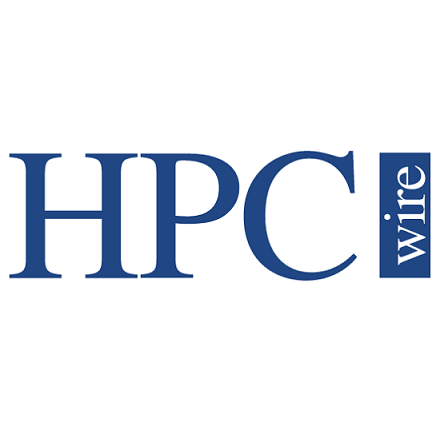
HPC Storage Enters a New Era
June 2, 2014
Until relatively recently, HPC storage systems have been almost an afterthought, a grab bag mix of components jury rigged together to support the star of the sh Read more…

HPC Storage – Deliver Solutions Faster to Market in Today’s Economy
June 17, 2013
Being competitive in today’s economy means companies need to accelerate the time it takes to go from concepts to profitable products and services. There is no shortage of new services, novel methods and innovations to help solve the problems we face; yet, to affect real change, faster market solutions need to be pragmatic and affordable. Read more…

Xyratex Targets Missing Middle with Scaled-Down ClusterStor 1500
May 9, 2013
In what has become a week of news around bringing HPC technology to the midrange market, Lustre file system gatekeeper, Xyratex, hashed out new boxes to bring down some parallel file system barriers and put higher performance on x86 cluster within closer reach for simulation and.... Read more…

How to Deploy Storage to Better Compete in Today’s Economy
April 29, 2013
Being competitive in today’s world economy means companies have to accelerate the time it takes to go from concept to profitable products and services. There is no shortage of new, good ideas and inventions to solve the problems we face; yet the world market demands solutions faster. Read more…

New OpenSFS Rep on the Future of Lustre
March 12, 2013
OpenSFS has chosen its Community Representative Director for 2013: Tommy Minyard, director of Advanced Computing Systems (ACS) at the Texas Advanced Computing Center (TACC). We got the new director's views on Lustre's opportunities in big data and exascale, maintaining a single source tree, and new features on the horizon. Read more…

Xyratex Captures Oracle’s Lustre
February 21, 2013
With the announcement this week that storage maker Xyratex has acquired Oracle's Lustre assets, the popular open source parallel file system is once again completely under the control of HPC stakeholders. Read more…

EIOW Shaping Exascale I/O is gaining Industry Momentum
December 11, 2012
As 2012 comes to a close, I see some great progress being made by the Exascale I/O Workgroup (EIOW – see <a href="http://www.EIOW.org" target="_blank">www.EIOW.org</a>). From helping formulate requirements on next generation I/O middleware to working among diverse HPC application developers and industry contributors, the group is charting a new direction for exascale-capable HPC architectural methods and prototypes. Read more…

Reliability Matters – Your HPC Workloads are Thirsty for Enterprise Quality
November 12, 2012
Is your current HPC data storage solution experiencing issues with disk drives? Are you seeing performance degradation, where HPC projects take longer to complete than they should? Is your performance situation normal, or are there reliable alternatives to achieving sustained performance at large HPC scale? Read more…

- Click Here for More Headlines

Whitepaper
Transforming Industrial and Automotive Manufacturing
In this era, expansion in digital infrastructure capacity is inevitable. Parallel to this, climate change consciousness is also rising, making sustainability a mandatory part of the organization’s functioning. As computing workloads such as AI and HPC continue to surge, so does the energy consumption, posing environmental woes. IT departments within organizations have a crucial role in combating this challenge. They can significantly drive sustainable practices by influencing newer technologies and process adoption that aid in mitigating the effects of climate change.
While buying more sustainable IT solutions is an option, partnering with IT solutions providers, such and Lenovo and Intel, who are committed to sustainability and aiding customers in executing sustainability strategies is likely to be more impactful.
Learn how Lenovo and Intel, through their partnership, are strongly positioned to address this need with their innovations driving energy efficiency and environmental stewardship.
Download Now
Sponsored by Lenovo
Whitepaper
How Direct Liquid Cooling Improves Data Center Energy Efficiency
Data centers are experiencing increasing power consumption, space constraints and cooling demands due to the unprecedented computing power required by today’s chips and servers. HVAC cooling systems consume approximately 40% of a data center’s electricity. These systems traditionally use air conditioning, air handling and fans to cool the data center facility and IT equipment, ultimately resulting in high energy consumption and high carbon emissions. Data centers are moving to direct liquid cooled (DLC) systems to improve cooling efficiency thus lowering their PUE, operating expenses (OPEX) and carbon footprint.
This paper describes how CoolIT Systems (CoolIT) meets the need for improved energy efficiency in data centers and includes case studies that show how CoolIT’s DLC solutions improve energy efficiency, increase rack density, lower OPEX, and enable sustainability programs. CoolIT is the global market and innovation leader in scalable DLC solutions for the world’s most demanding computing environments. CoolIT’s end-to-end solutions meet the rising demand in cooling and the rising demand for energy efficiency.
Download Now
Sponsored by CoolIT
Advanced Scale Career Development & Workforce Enhancement Center
Featured Advanced Scale Jobs:
HPCwire Resource Library
HPCwire Product Showcase
© 2024 HPCwire. All Rights Reserved. A Tabor Communications Publication
HPCwire is a registered trademark of Tabor Communications, Inc. Use of this site is governed by our Terms of Use and Privacy Policy.
Reproduction in whole or in part in any form or medium without express written permission of Tabor Communications, Inc. is prohibited.
























